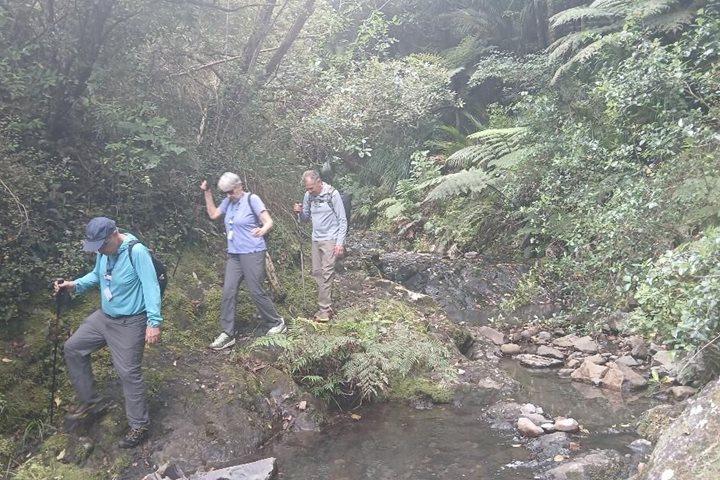Located on the outer edge of the Hauraki Gulf, New Zealand’s fourth largest island, Aotea/Great Barrier, is small in population and, delightedly, it lacks footpaths, streetlights, and powerlines. A treasured Dark Sky Sanctuary, it features empty beaches, craft galleries, diverse landscapes, and a sustainability-focused way of life. Flora and fauna that are extinct on the mainland have survived on the island; after a fascinating introductory presentation by the operations manager, we visited the Glenfern Sanctuary Regional Park to experience some of these species.
Although mostly logged to create farmland by an earlier property owner, Glenfern Sanctuary has been carefully and thoroughly revegetated with over 10,000 native plants, from trees to understory shrubs and flowering herbs. A few stunning ancient Pūriri and Kauri trees over 600 years old were not cut and remain as sentinels of the past, already forest giants when Captain Cook first sighted New Zealand in 1769. Kauri is among the largest and longest-lived trees in the world – we reached the tree’s crown via suspension bridge, enjoying glimpses into the forest canopy amongst the epiphytes. Pūriri’s bright red berries are an important food for kereru (New Zealand pigeon) and other birds that serve as the primary mechanisms for its distribution.
Active restoration was essential at Glenfern to more rapidly establish a pristine native bush habitat that would otherwise take centuries to develop. The sanctuary has a two-kilometer, predator-proof fence that provides protection from cats, pigs, and rats; trapping and monitoring programs are ongoing to ensure the peninsula remains free of pests, enabling endemic species to breed and flourish. Rodney Ngawaka from the local Māori iwi greeted us at Sunset Rock lookout, where panoramic views extend across Hauraki Gulf. He shared Aotea/Great Barrier’s history, the people and stories behind landmark and island names, and the importance of the Glenfern restoration to the wider community.
New Zealand’s forests are complex communities of plants and animals. Branches support gardens of perching plants while vines seeking sunlight tangle their way up trunks; shade tolerant species fill the cool, damp, sheltered forest floor. Tree ferns thrive in canopy gaps created by fallen old trees with elegant, slender trunks and umbrellas of textured fronds. Aotea/Great Barrier Island was a wonderful introduction to this North Island ecosystem!







